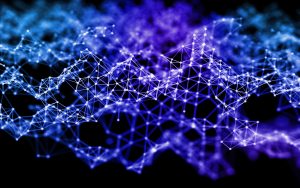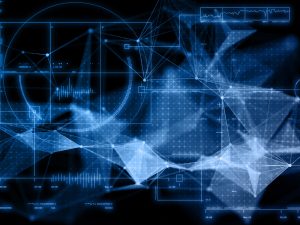In a world where data is often referred to as the “new oil,” the importance of data annotation becomes increasingly clear. Data annotation involves the process of labeling and tagging raw data to make it understandable for machine learning algorithms, and its significance is soaring in an era driven by artificial intelligence.
As businesses and researchers leverage vast amounts of unstructured data, understanding the different categories of data annotation—such as text, image, video, and audio—is crucial. Each type has unique requirements and applications, impacting how data is processed and utilized for various purposes.
This article delves into the landscape of data annotation, exploring its categories, the challenges faced in maintaining quality and managing large datasets, and the innovative solutions that are emerging. By examining current tools and technologies, as well as future trends like automation and crowdsourcing, we aim to provide a comprehensive understanding of this vital aspect of data science.
Overview of Data Annotation
Data annotation is an essential process in developing machine learning models, as it transforms raw data into high-quality training datasets required for model performance. Human annotators play a critical role in ensuring this data is accurately labeled, bringing context, domain expertise, and an understanding of intent to various annotation tasks.
Annotation projects often employ both manual annotation and annotation tools to maintain high-quality data. This high-quality annotated data is foundational for the success of tasks such as entity recognition, facial recognition, intent annotation, and more, across a variety of vision tasks and beyond.
As the demand for high-quality annotated data grows, many organizations are turning to specialized AI data preparation services to meet their machine learning needs.
Categories of Data Annotation
There are several types of data annotation, let’s take a look at some of the most common:
Text Annotation
Text annotation involves labeling or tagging specific elements within text data, crucial for natural language processing tasks such as sentiment analysis and text classification. This process helps machines understand underlying information like emotions and sentiments. Human annotators are usually involved in assigning categories and definitions to texts, ensuring the depth and accuracy that automated tools may lack. While automated annotation tools can speed up the process and reduce costs, manual annotation is often pivotal for detail-oriented tasks.
Image Annotation
Image annotation is the process of labeling images to identify and categorize objects, scenes, concepts, or attributes. This involves techniques like drawing bounding boxes around objects or providing textual descriptions to train AI and machine learning models effectively. Image classification, a key component of this category, enables machines to recognize the overall content of labeled images. Object detection and recognition tasks focus on precisely identifying and localizing specific elements within an image, which refines the granularity and accuracy of visual data classification.
Video Annotation
Video annotation requires the meticulous labeling of various elements within video content, enabling machines to comprehend and analyze moving subjects or objects. Due to the dynamism of video data, this process demands frame-by-frame analysis, thus being more time-consuming and complex than image annotation. Video classification is an essential aspect of this process, where content is categorized into predefined classes, essential for tasks like content moderation to ensure safe viewing experiences. Efficient video annotation tools are vital for recognizing objects and actions within the dynamic environment of videos, significantly bolstering the development of advanced computer vision models.
Audio Annotation
Audio annotation involves labeling or classifying components in audio data, facilitating machine understanding for applications like voice recognition and music recommendation systems. The demand for high-quality audio annotation solutions is rapidly growing, demonstrating market projections of a fourteenfold increase between 2017 and 2025. This process requires specialized software for accurately labeling audio data, with human annotators adding relevant words or phrases to describe sounds. Unlike transcription, which converts spoken words into text, audio annotation involves adding labels and metadata to enrich the audio file for precise machine learning model training.
By understanding and implementing these various types of data annotation, organizations can generate the high-quality data necessary to advance intelligent systems and improve their performance across diverse applications.
Here’s a quick comparison:
| Type of Annotation | Key Tasks |
| Image | Object Detection, Image Segmentation |
| Video | Frame Annotation, Facial Recognition |
| Audio | Speech Recognition, Sentiment Annotation |
| Text | Semantic Annotation, Intent Annotation |
Tools and Technologies Used in Data Annotation
Data annotation is a crucial step in preparing high-quality annotated data for machine learning models. Various tools and technologies enhance the annotation process, making it efficient and accurate.
Manual Annotation Tools: Tools like LabelImg, VGG Image Annotator (VIA), and LabelMe enable human annotators to meticulously label data. They are ideal for tasks such as image classification, semantic segmentation, and entity recognition, providing precise control in vision tasks like bounding boxes and image segmentation.
Semi-Automated Tools: The Computer Vision Annotation Tool (CVAT) exemplifies semi-automated capabilities. It employs pre-trained models to assist annotators, streamlining complex tasks like object detection and video annotation. This approach balances human expertise with automation, improving model performance.
Effective Features: Robust annotation tools often include dataset management features. These capabilities allow for easy data import, organization, and export into formats suitable for machine learning models. The tools facilitate accurate annotations, crucial for applications like facial recognition, natural language processing, and sentiment analysis.
By leveraging these diverse tools, annotation projects can generate high-quality training data, supporting advancements in artificial intelligence and applications such as self-driving cars.
Challenges in Data Annotation
Data annotation is a vital component of developing effective machine learning models, but it comes with a variety of challenges. Ensuring high-quality data for applications like facial recognition, self-driving cars, and natural language processing hinges on overcoming these obstacles. The complexity and labor-intensive nature of annotation tasks, such as image classification, semantic segmentation, and intent annotation, require sophisticated strategies and tools.
Quality Control Measures
Maintaining the accuracy and consistency of annotated data is crucial for the success of machine learning projects. Implementing rigorous quality control measures is fundamental in achieving this. Regular quality checks, such as cross-checking annotations by multiple human annotators, help to verify data accuracy. Periodic audits, where we compare annotations against ground truth datasets, play a critical role in sustaining high standards.
Inter-annotator agreement checks are also vital. They ensure that different annotators produce consistent results on the same data samples, minimizing variability. To enhance annotation quality, feedback sessions enable annotators to refine their work, promoting continuous improvement and addressing any discrepancies identified through evaluations.
Managing Large Datasets
As datasets grow, managing data annotation becomes more complex. Large datasets require efficient workflows and sophisticated tools to handle increased demands. Manual labeling can be exceptionally time-consuming and resource-heavy, so optimizing the annotation process is essential.
Modern annotation tools should allow for seamless import, organization, and export to manage high volumes of data effectively. This is essential for maintaining precision, especially with occluded or partially visible objects within complex datasets. Ensuring the quality of annotated data within extensive datasets is critical because it directly impacts model performance and the generation of high-quality training data.
Addressing these challenges allows annotation projects to produce consistently accurate annotations and support the advancement of artificial intelligence technologies—even with increasing data volume and complexity.
Future Trends in Data Annotation
As data becomes increasingly central to AI development, the field of data annotation is evolving rapidly. Future trends prioritize optimizing the annotation process, enhancing annotated data quality, and integrating innovative technologies to meet the growing demand for high-quality training data. Key advancements include increased automation, enhanced tools for semantic segmentation, and improved methods for capturing complex annotations necessary for vision tasks and natural language processing. The rise of automated annotation processes and the expansion of crowdsourcing initiatives are transforming how we train and refine machine learning models, ensuring access to accurate and diverse datasets.
Automation in Data Annotation
Automation in data annotation is revolutionizing the annotation process. It leverages machine learning algorithms to speed up and reduce the cost of labeling tasks. Automated or semi-automated annotation solutions can significantly improve model performance by providing consistent, high-quality data. Rule-based annotation systems rely on handcrafted rules and are particularly effective for simpler tasks where domain expertise can define precise annotations. Meanwhile, active learning techniques optimize the efficiency of human annotators by identifying the unlabeled samples that are most crucial for enhancing the training dataset. AI-driven tools enhance the scalability and efficiency of these processes and maintain quality, making them indispensable for large-scale annotation projects like those required for self-driving cars and facial recognition systems.
The Role of Crowdsourcing
Crowdsourcing in data annotation leverages the collective intelligence of a large group of human annotators. This provides a fast and often cost-effective way to generate extensive annotated datasets. Platforms like Amazon Mechanical Turk streamline the distribution of annotation tasks. This facilitates the rapid assembly of data for various AI applications, from sentiment analysis to entity recognition. However, using crowdsourcing requires robust validation processes to ensure data accuracy, as annotator skill levels vary and can impact annotation quality. While crowdsourcing benefits large projects, it can be challenging to match the precision and expertise of professional annotators, particularly for complex tasks in natural language processing or nuanced vision tasks like image segmentation and image classification. To mitigate these challenges, many projects combine crowdsourcing and expert validation to balance scale and quality control.





